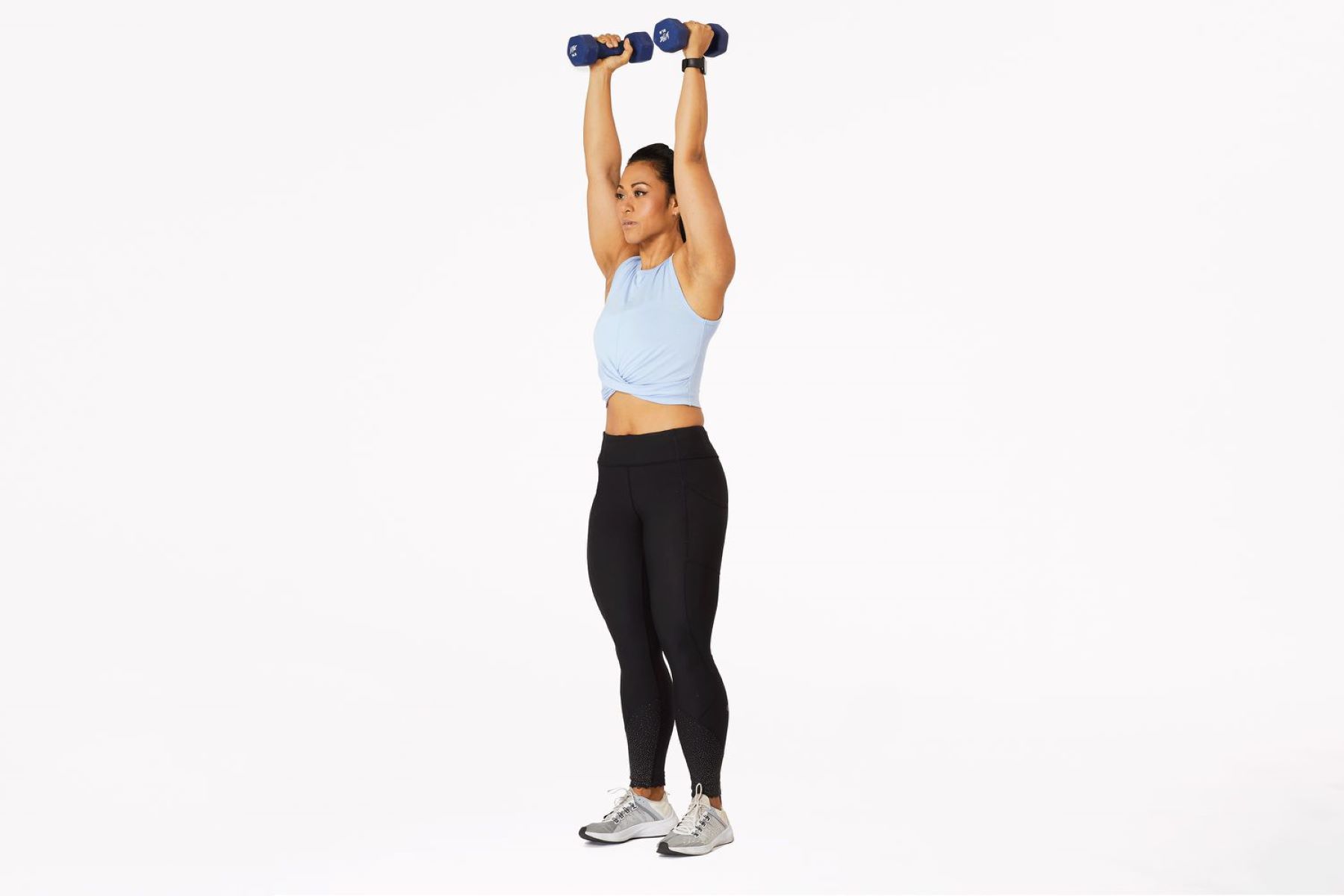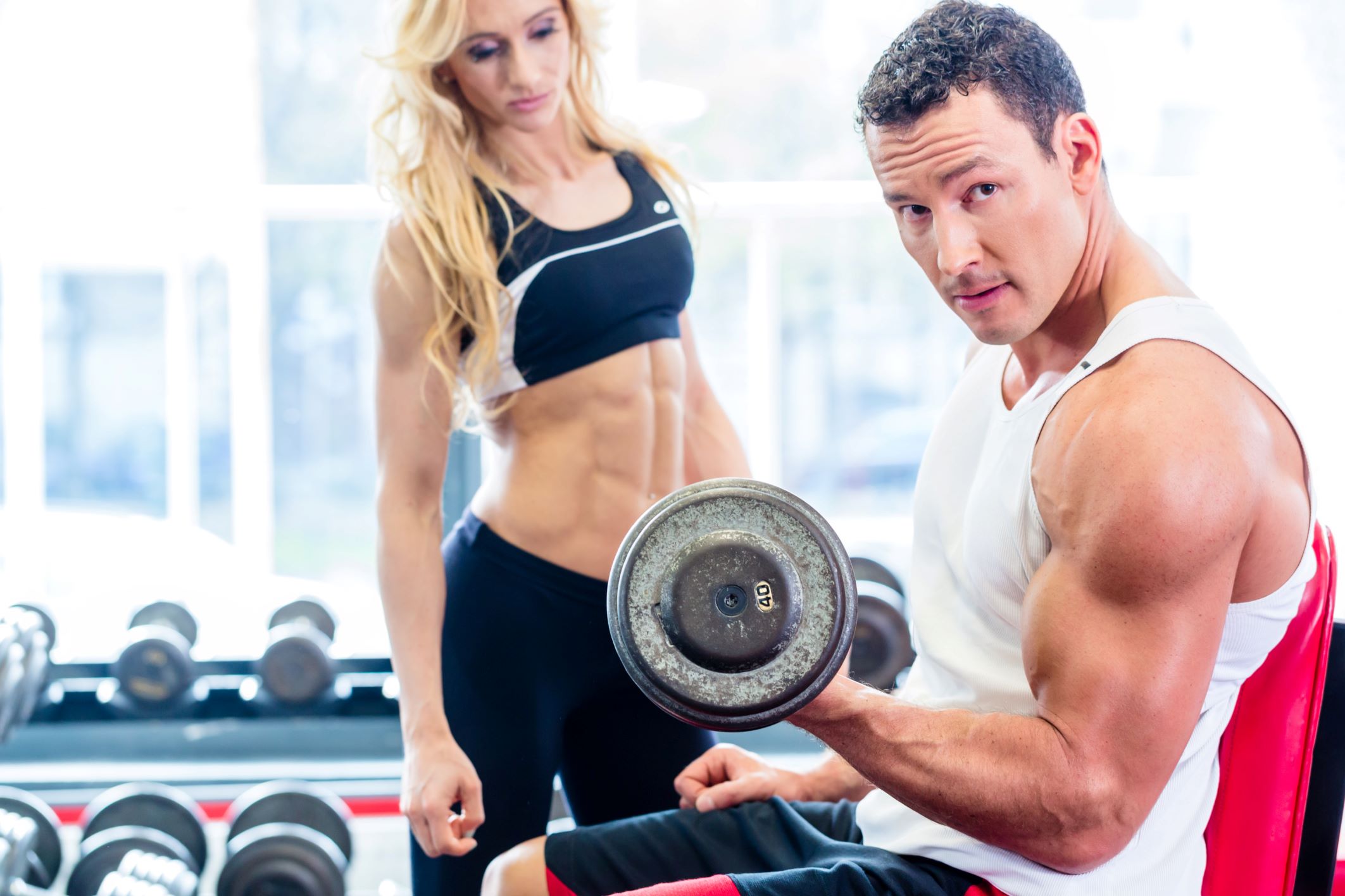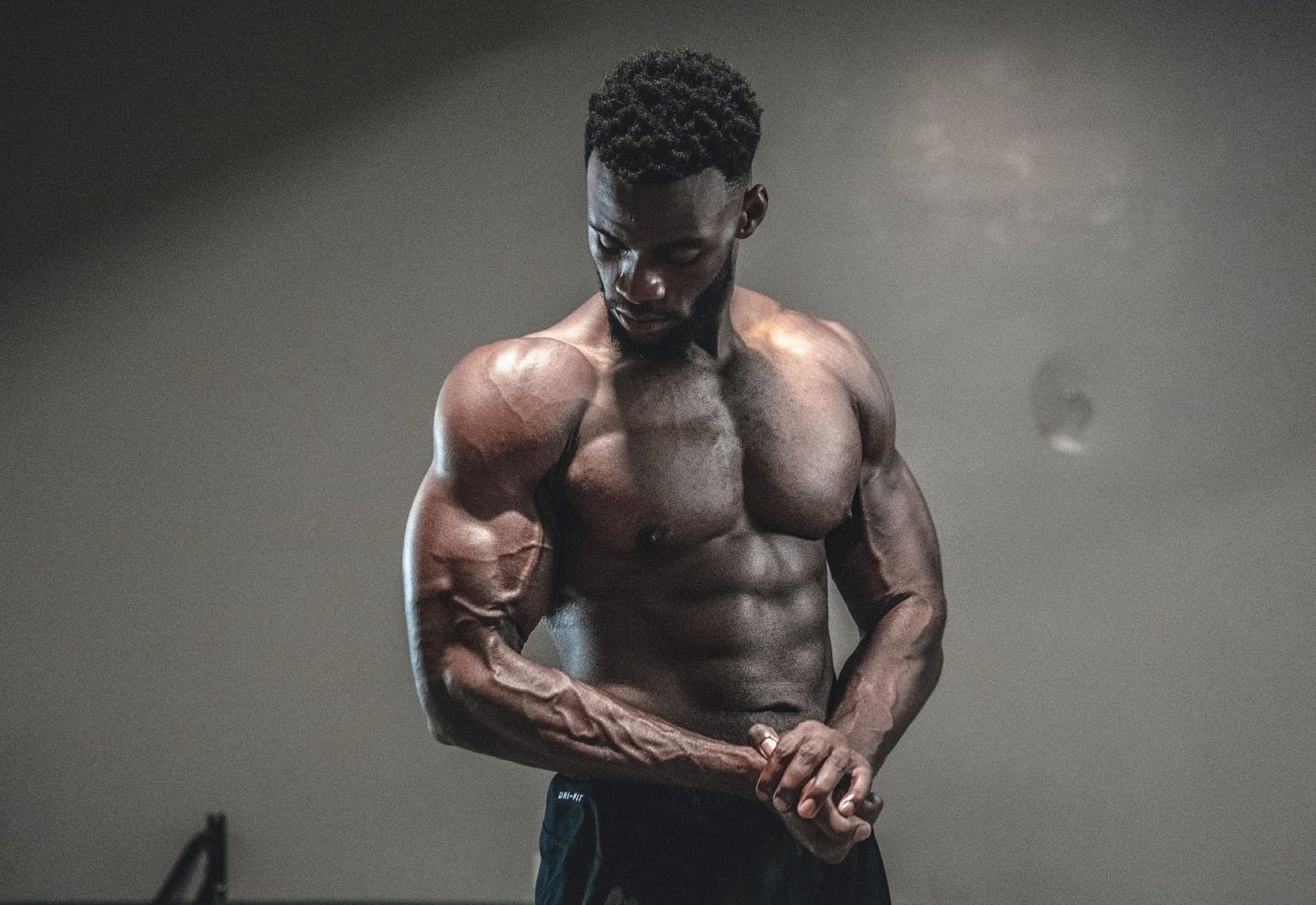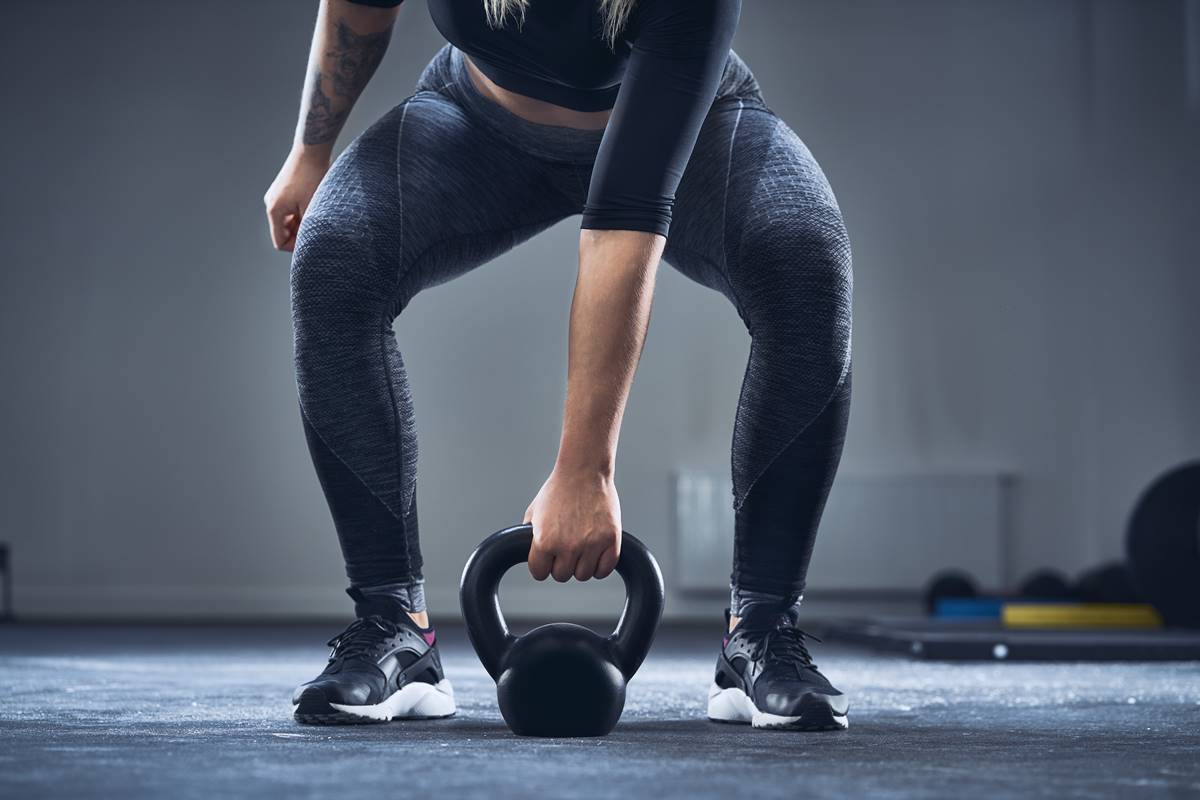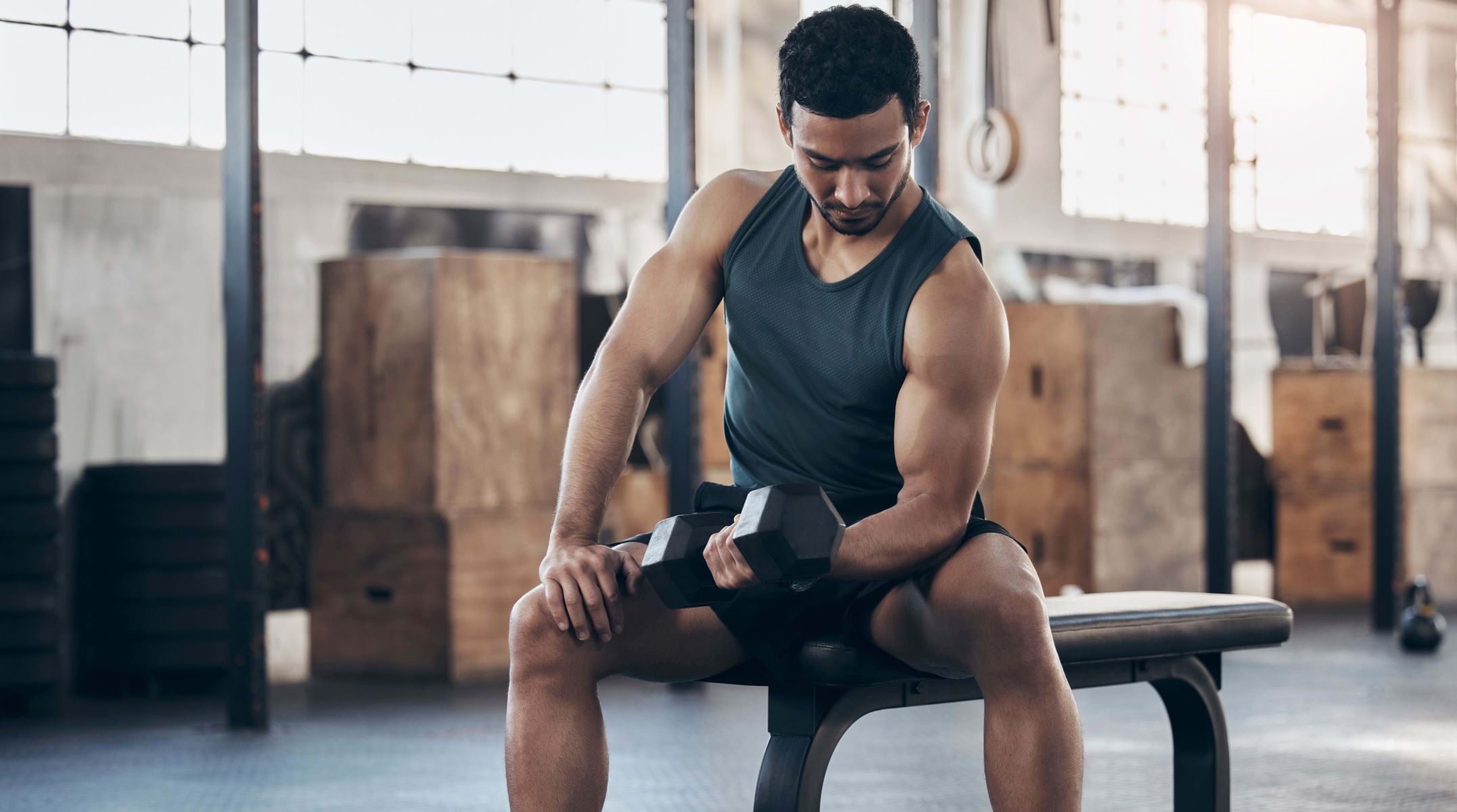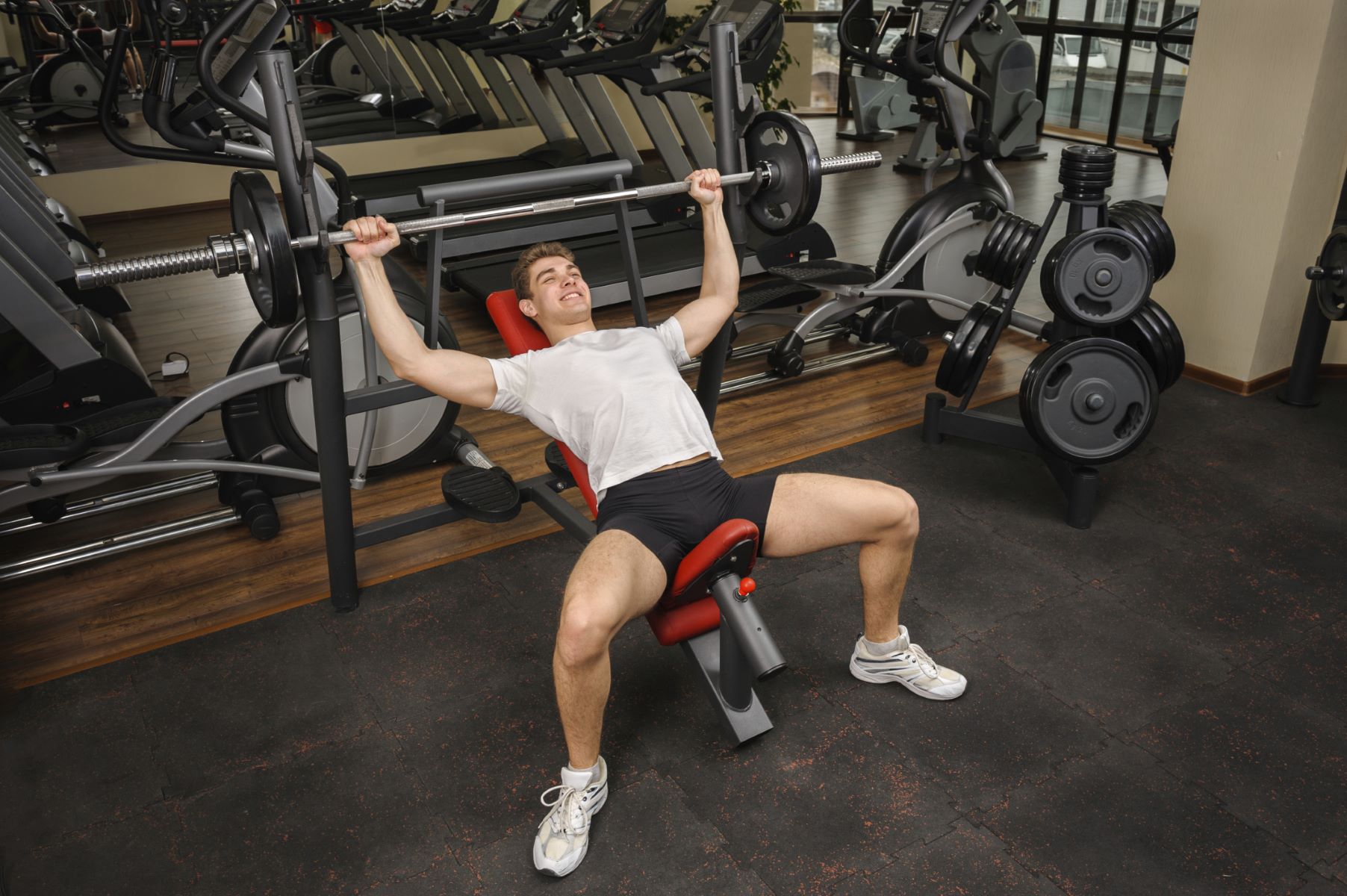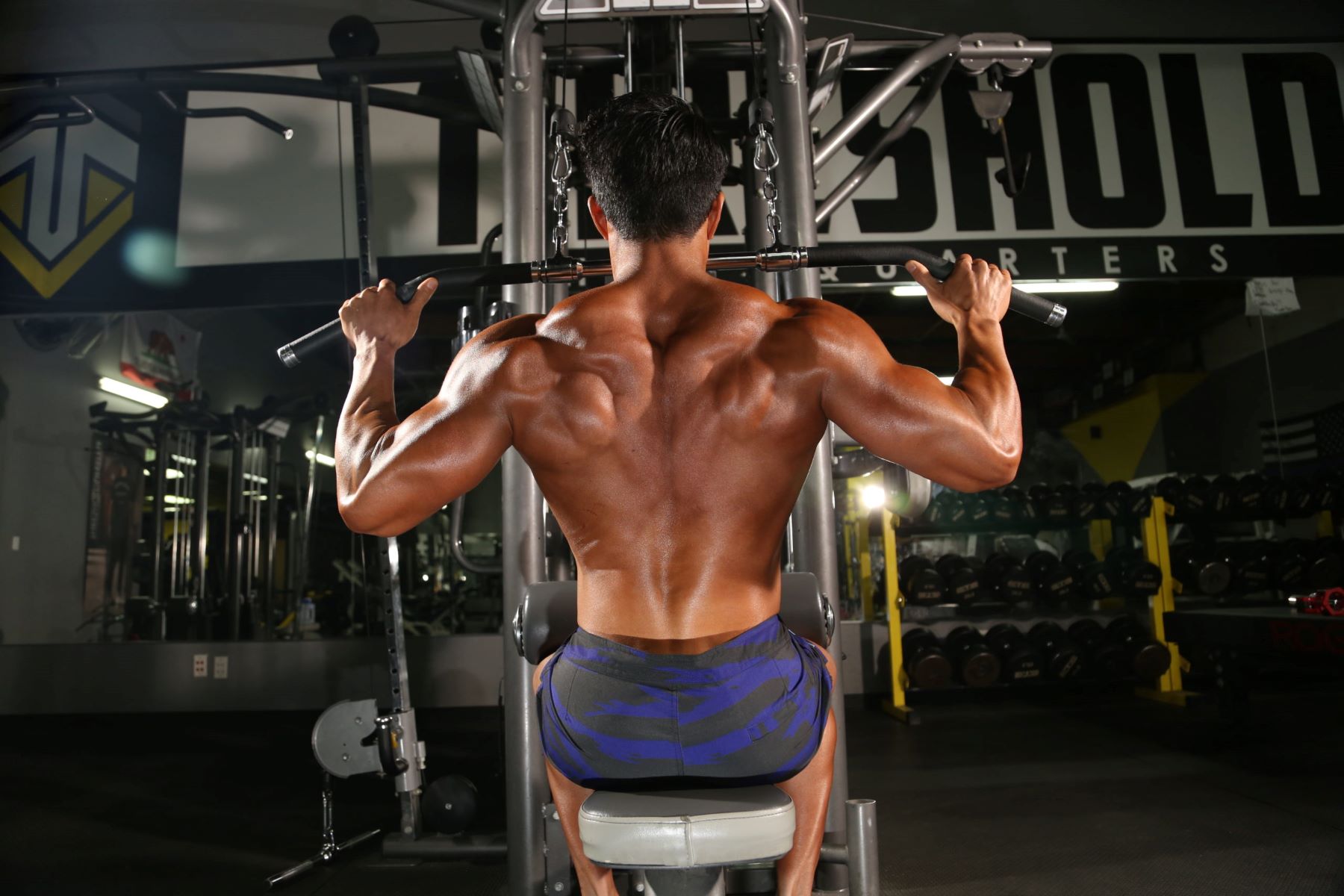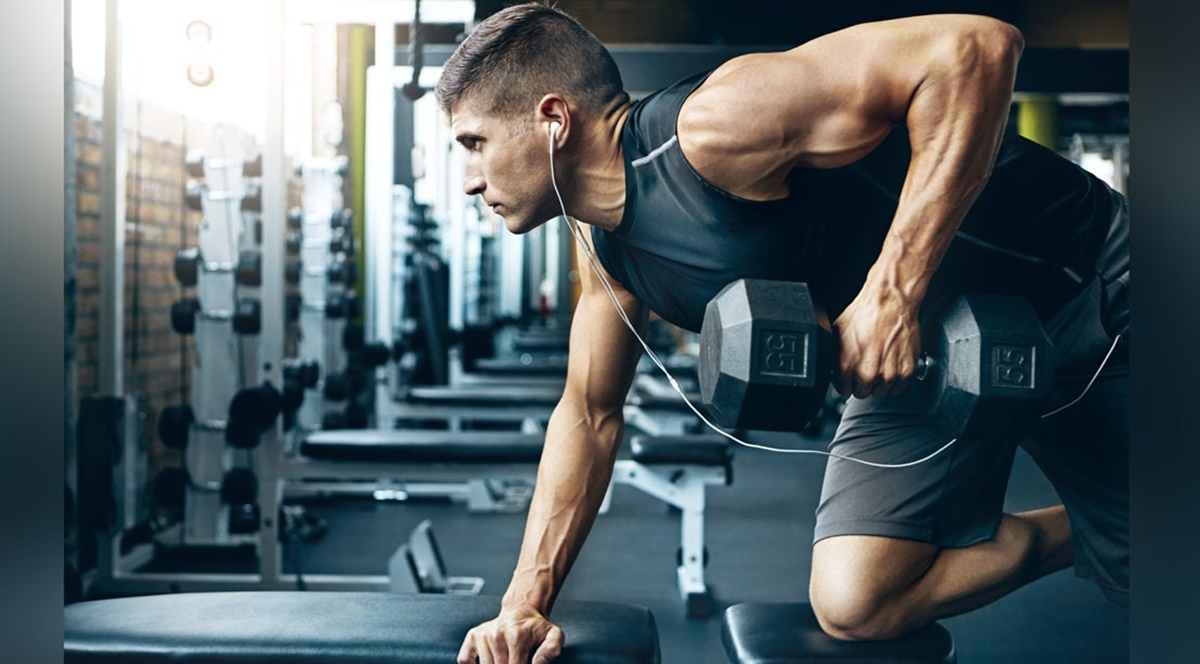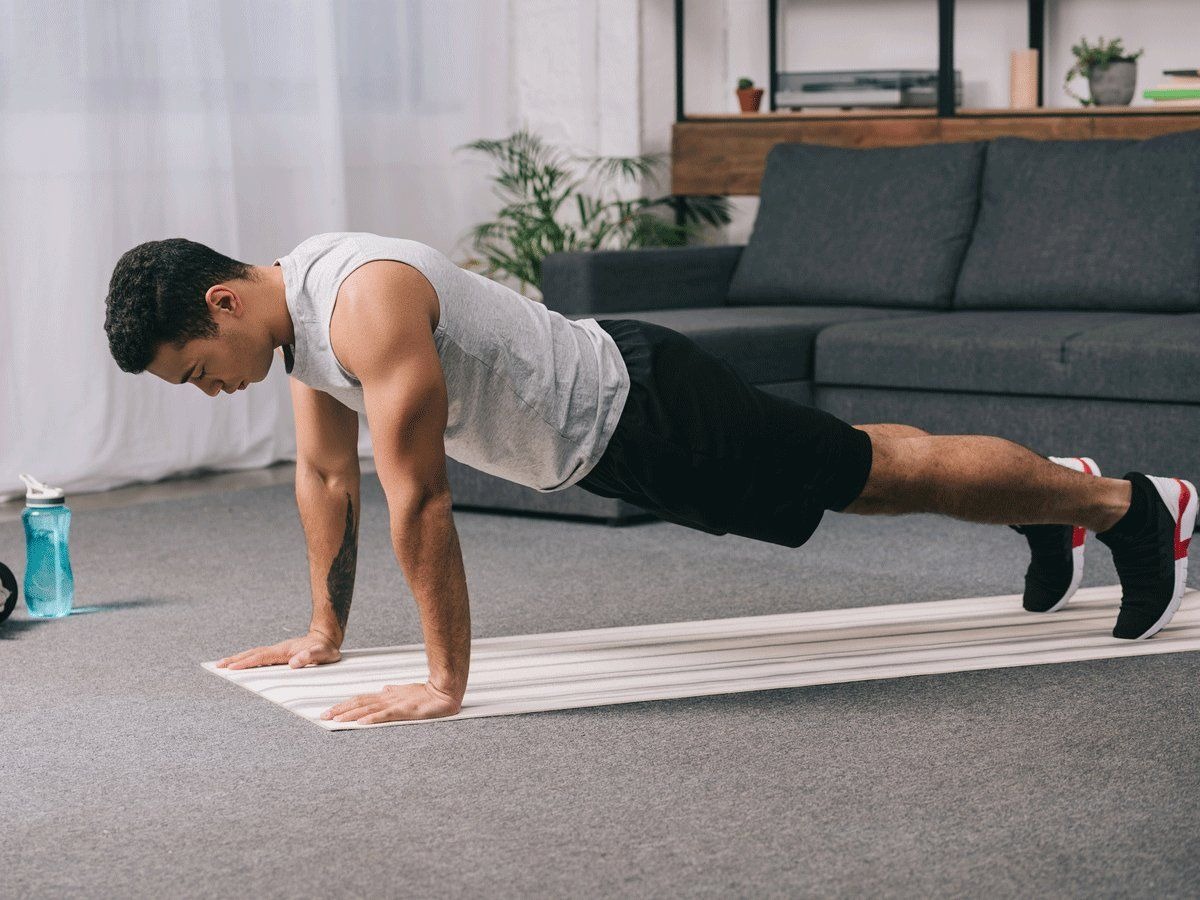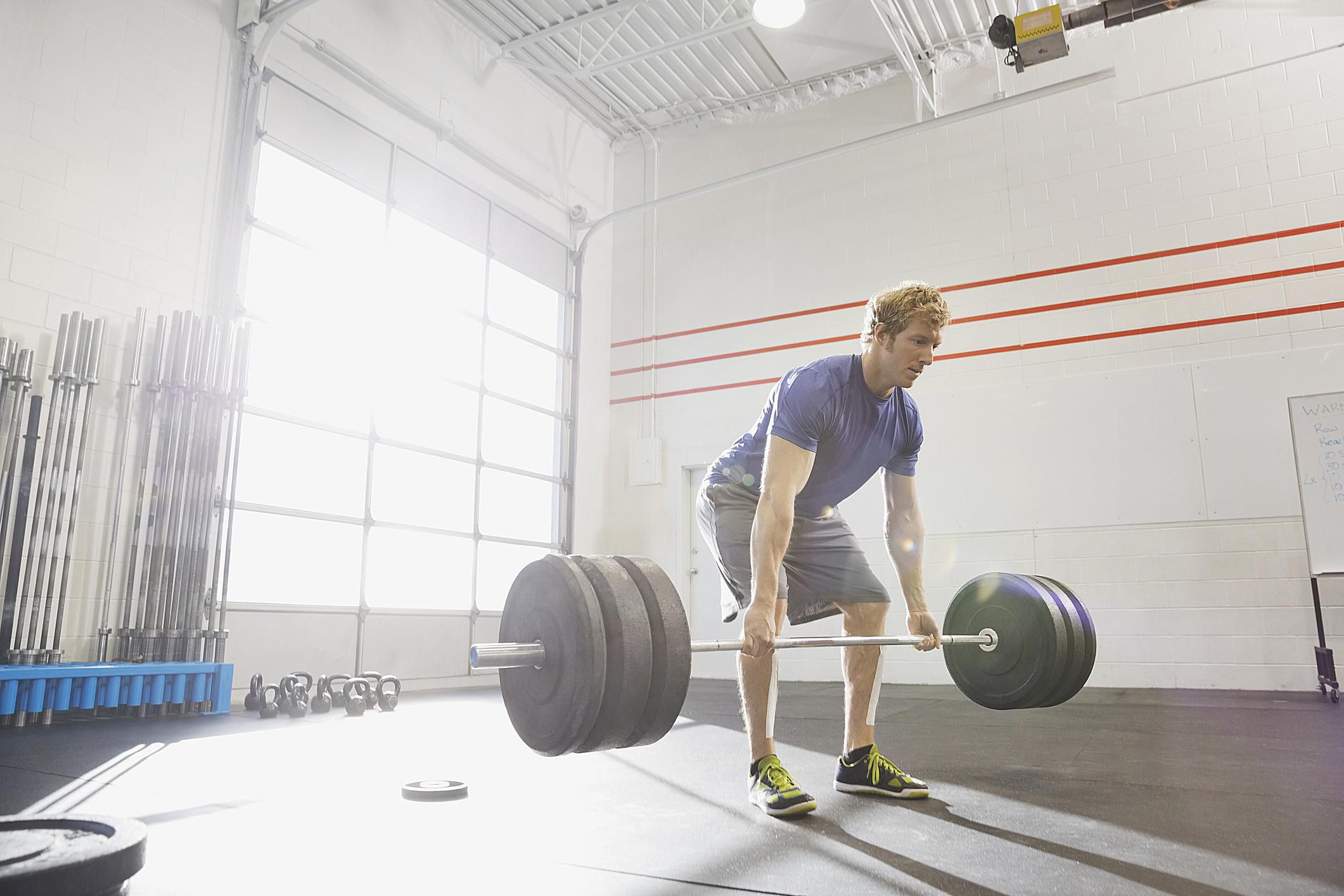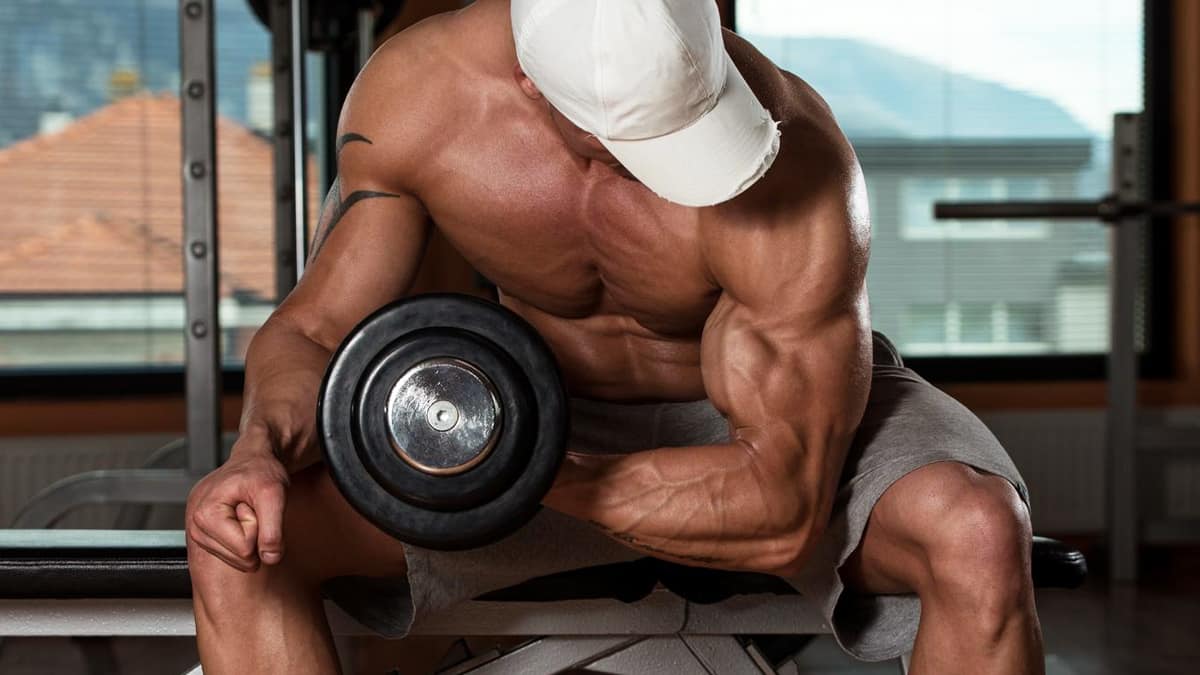

Featured
What Is The Best Exercise For Biceps
Modified: January 2, 2024
Discover the ultimate exercise for biceps with our featured workout guide. Get the results you desire and achieve impressive biceps in no time.
Introduction
Welcome to the world of fitness and strength training! If you’re looking to develop strong and well-defined biceps, you’re in the right place. The biceps, as one of the most prominent muscles in the arms, not only add aesthetic appeal but also play a crucial role in various upper-body movements.
Whether you want to rock those sleeveless shirts or enhance your overall strength, incorporating the best biceps exercises into your workout routine is essential. But with so many options out there, how do you determine which exercise is the most effective for biceps growth?
In this article, we will delve into the world of biceps training and help you discover the best exercises to maximize your results. We will explore the importance of biceps training, factors to consider when choosing biceps exercises, and provide a comprehensive list of exercises that target the biceps muscles.
Before we dive into the specific exercises, let’s take a moment to appreciate why training the biceps is so important. Strong biceps not only contribute to an impressive physique but also serve as key players in numerous daily activities.
Whether you’re lifting grocery bags, carrying your kids, or participating in sports that involve throwing or pulling, your biceps are activated and put to the test. And let’s not forget the confidence boost that comes with having well-developed arms!
Building biceps strength is not just about the looks; it’s about functional fitness and improving your overall quality of life. So, without further ado, let’s dive into the factors that you should consider when selecting the best exercises for your biceps.
Importance of Biceps Training
When it comes to biceps training, many people tend to prioritize aesthetics. While having well-defined biceps can certainly enhance your appearance, there are several other important reasons why including biceps exercises in your workout routine is crucial.
1. Functional Strength: Your biceps are involved in a multitude of daily activities such as lifting objects, pulling, and pushing. By training your biceps, you enhance their strength and functionality, making these activities easier and reducing the risk of injury.
2. Upper Body Power: Your biceps are part of the larger complex of muscles that make up your upper body. Strengthening your biceps not only improves their individual strength but also contributes to overall upper body power, allowing you to perform better in activities like lifting weights, throwing, and swinging.
3. Balanced Muscular Development: Neglecting to train your biceps can result in imbalances in your upper body musculature. Strengthening your biceps in conjunction with other muscle groups, such as your triceps and back, promotes overall balanced muscular development. This not only improves your physical appearance but also reduces the risk of postural issues and muscular imbalances.
4. Injury Prevention: Strong and well-conditioned biceps can help prevent injuries, especially in the upper body. By strengthening the supporting muscles around your joints, such as the elbow and shoulder, you create a stable and protected environment that reduces the risk of strains and tears.
5. Overall Confidence: Let’s face it, having well-developed biceps can significantly boost your self-confidence. When you feel good about your physical appearance and strength, it positively impacts other areas of your life as well.
Now that you understand the importance of training your biceps beyond just aesthetics, let’s explore the factors you should consider when selecting the best exercises for your biceps.
Factors to Consider for Biceps Exercises
When it comes to choosing the best exercises for your biceps, there are several factors to consider. These factors will help you identify exercises that target the biceps muscles effectively and ensure that you get the most out of your workouts. Here are some key factors to keep in mind:
1. Isolation vs. Compound Movements: Biceps exercises can be categorized as either isolation exercises or compound movements. Isolation exercises specifically target the biceps, while compound movements involve multiple muscle groups. Both types of exercises have their benefits. Isolation exercises allow you to directly focus on the biceps and create a greater mind-muscle connection. Compound movements, on the other hand, provide functional strength and engage multiple muscle groups simultaneously. Depending on your goals and preferences, you can incorporate a mix of both types into your routine.
2. Range of Motion: The range of motion that an exercise allows is an important consideration. Opting for exercises that allow a full range of motion ensures that you engage the biceps effectively and maximize muscle activation. Exercises that restrict the range of motion may not provide optimal results.
3. Equipment Availability: Consider the equipment you have access to when choosing biceps exercises. Some exercises require specific equipment like barbells, dumbbells, or cables, while others can be performed with minimal equipment using bodyweight. Choose exercises that you can comfortably perform based on the equipment available to you.
4. Training Level: Your training level also plays a role in determining the best exercises for your biceps. Beginners may benefit from simpler exercises that allow them to focus on form and technique, while more advanced individuals may require more challenging variations to continue making progress.
5. Personal Preference: It’s important to enjoy the exercises you perform to stay motivated and consistent. If you don’t enjoy a particular exercise, it’s unlikely that you’ll perform it regularly. Take into account your personal preferences and select exercises that you find enjoyable and engaging.
By considering these factors, you can tailor your biceps workout to meet your specific needs and goals. Now that we’ve covered the factors to consider, let’s dive into the best biceps exercises that you can incorporate into your routine for maximum gains.
Best Biceps Exercises
When it comes to building impressive biceps, there are several exercises that target the biceps muscles effectively. Incorporating a variety of exercises into your routine ensures that you hit the muscles from different angles and stimulate maximum growth. Here are some of the best biceps exercises to consider:
- Barbell Bicep Curl: This classic exercise is a staple in biceps training. Hold a barbell with an underhand grip shoulder-width apart, keeping your elbows close to your sides. Curl the barbell up towards your shoulders, squeezing your biceps at the top, and then lower it down slowly.
- Dumbbell Bicep Curl: Similar to the barbell curl, the dumbbell curl allows for greater range of motion and unilateral training. Stand with a dumbbell in each hand, palms facing forward. Curl the dumbbells up towards your shoulders, keeping your elbows stationary, and then lower them down with control.
- Hammer Curl: This exercise targets both the biceps and the brachialis, a muscle located underneath the biceps. Hold a dumbbell in each hand with a neutral grip (palms facing each other). Curl the dumbbells up towards your shoulders, maintaining the neutral grip throughout the movement.
- EZ-Bar Curl: The EZ-bar is a curved bar that places less stress on the wrists compared to a straight barbell. Hold the EZ-bar with an underhand grip, hands shoulder-width apart. Curl the bar up towards your shoulders, keeping your elbows close to your sides, and then lower it down in a controlled manner.
- Preacher Curl: The preacher curl targets the biceps while isolating them by providing support for the upper arms. Sit or stand with your upper arms resting on a preacher bench, holding a barbell or dumbbells. Curl the weight up towards your shoulders, squeezing the biceps, and slowly lower it down.
- Concentration Curl: This exercise is performed sitting down, focusing on one arm at a time to isolate the biceps. Sit on a bench, hold a dumbbell in one hand, and rest your elbow against the inside of your thigh. Curl the dumbbell up towards your shoulder, squeezing the bicep, and then lower it down under control.
- Chin-Up: While primarily known as a back exercise, chin-ups also engage the biceps as a secondary muscle group. Grip a bar with palms facing towards you, hands shoulder-width apart. Pull yourself up until your chin is above the bar, engaging your biceps, and then lower yourself down with control.
Incorporate a mix of these exercises into your workouts to target the biceps muscles from different angles and stimulate growth. Remember to start with a weight that allows you to perform each exercise with proper form and gradually increase the weight as your strength improves. Combine these exercises with a well-rounded strength training program for optimal results.
Barbell Bicep Curl
The barbell bicep curl is a classic and effective exercise that targets the biceps muscles. By using a barbell, you can load more weight and stimulate muscle growth. Here’s how to perform the barbell bicep curl:
- Stand with your feet shoulder-width apart, knees slightly bent, and maintain a straight posture.
- Hold a barbell with an underhand grip, hands slightly wider than shoulder-width apart.
- Keep your elbows close to your sides and fully extend your arms, allowing the barbell to hang in front of your thighs.
- Exhale and slowly curl the barbell up towards your shoulders, contracting your biceps muscles. Keep your upper arms stationary throughout the movement.
- Once the barbell reaches shoulder height, squeeze your biceps at the top of the movement.
- Inhale and gradually lower the barbell back down to the starting position, fully extending your arms.
- Repeat for the desired number of reps.
It’s important to maintain proper form while performing the barbell bicep curl. Avoid using momentum or swinging the barbell to lift the weight. Focus on controlled and deliberate movements to fully engage the biceps muscles.
You can vary your grip width to target different areas of the biceps. A wider grip places more emphasis on the outer portion of the biceps, while a narrower grip targets the inner portion of the biceps. Experiment with different grip widths to find what works best for you.
The barbell bicep curl can be performed using an adjustable barbell or a fixed barbell. If you’re a beginner, start with a lightweight and gradually increase the weight as you build strength and become more comfortable with the exercise.
Remember to warm up before performing the barbell bicep curl to prevent injuries and prepare your muscles for the workout. Perform a few sets with light weights or use resistance bands to activate your biceps and increase blood flow to the muscles.
Incorporate the barbell bicep curl into your biceps workout routine, along with other exercises, to achieve well-rounded biceps development. By consistently challenging your muscles with progressive overload and focusing on proper form, you’ll see improvements in strength and muscle size.
Dumbbell Bicep Curl
The dumbbell bicep curl is a versatile and effective exercise that targets the biceps muscles. It allows for a greater range of motion compared to other bicep exercises, helping to stimulate muscle growth. Here’s how to perform the dumbbell bicep curl:
- Stand with your feet shoulder-width apart and hold a dumbbell in each hand, palms facing forward.
- Keep your back straight, core engaged, and elbows close to your sides.
- Start with your arms fully extended, allowing the dumbbells to hang at your sides.
- Exhale and slowly curl the dumbbells up towards your shoulders, rotating your palms to face your shoulders at the top of the movement. Keep your elbows stationary throughout the exercise.
- Once the dumbbells reach shoulder height, squeeze your biceps at the top of the movement for a brief pause.
- Inhale and gradually lower the dumbbells back down to the starting position, fully extending your arms.
- Repeat for the desired number of repetitions.
To fully engage the biceps muscles during the dumbbell bicep curl, focus on controlled and deliberate movements. Avoid using momentum or swinging the dumbbells to lift the weight. Maintaining proper form is key for maximizing the benefits of this exercise.
You can choose to perform the dumbbell bicep curl alternately (one arm at a time) or simultaneously (both arms together). Both variations have their benefits, so experiment with both to find what works best for you.
To target different areas of the biceps, you can vary your grip. Using a supine grip (palms facing upward) emphasizes the short head of the biceps, while using a neutral grip (palms facing each other) engages the long head of the biceps. Alternating between these two grips can help achieve balanced biceps development.
The dumbbell bicep curl can be performed using various weights to suit your fitness level. Start with a weight that challenges you without sacrificing proper form and gradually increase the weight as you become stronger. Remember that it’s important to focus on form rather than lifting heavy weights.
Incorporate the dumbbell bicep curl into your biceps workout routine, along with other exercises, to achieve well-rounded biceps development. By consistently challenging your muscles with progressive overload and incorporating different variations, you’ll see improvements in strength and muscle definition.
Hammer Curl
The hammer curl is a versatile biceps exercise that targets both the biceps and the brachialis, a muscle located underneath the biceps. This exercise helps develop overall biceps strength and adds thickness to the arms. Here’s how to perform the hammer curl:
- Stand with your feet shoulder-width apart, holding a dumbbell in each hand with a neutral grip (palms facing each other).
- Keep your back straight, core engaged, and shoulders relaxed.
- Start with your arms fully extended, allowing the dumbbells to hang at your sides.
- Keep your elbows close to your sides and exhale as you curl the dumbbells up towards your shoulders.
- As you curl, maintain the neutral grip, keeping your palms facing each other throughout the movement.
- Once the dumbbells reach shoulder height, squeeze your biceps at the top of the movement for a brief pause.
- Inhale and slowly lower the dumbbells back down to the starting position, fully extending your arms.
- Repeat for the desired number of repetitions.
The hammer curl allows for a greater range of motion compared to other biceps exercises, targeting both the biceps and the brachialis. By using a neutral grip, you engage the muscles differently, emphasizing the forearms and adding thickness to the upper arms.
It’s important to maintain proper form during the hammer curl. Focus on controlled movements, avoiding any swinging or momentum. Keep your elbows stationary throughout the exercise and concentrate on contracting the biceps and brachialis muscles at the top of the movement.
Like other biceps exercises, you can perform the hammer curl using dumbbells of varying weights. Begin with a weight that challenges you without compromising your form, and gradually increase the weight as your strength improves.
Incorporating the hammer curl into your biceps workout routine provides a variation that targets the muscles from a different angle. By incorporating multiple grip positions, such as underhand grip curls and hammer curls, you can ensure balanced development of the biceps muscles.
Remember, consistency and proper form are key to achieving the desired results. Include the hammer curl in combination with other biceps exercises to optimize your biceps training and develop strong, defined arms.
EZ-Bar Curl
The EZ-bar curl is a popular biceps exercise that targets the muscles from a slightly different angle compared to traditional barbell curls. This exercise is performed with an EZ-bar, which has angled grips that place less stress on the wrists. Here’s how to perform the EZ-bar curl:
- Stand with your feet shoulder-width apart and grasp the EZ-bar with an underhand grip, hands slightly wider than shoulder-width apart.
- Keep your back straight, core engaged, and elbows close to your sides.
- Start with your arms fully extended, allowing the EZ-bar to hang in front of your thighs.
- Exhale and slowly curl the EZ-bar up towards your shoulders, maintaining a tight grip on the angled grips. Keep your elbows stationary throughout the exercise.
- Once the EZ-bar reaches shoulder height, squeeze your biceps at the top of the movement for a brief pause.
- Inhale and gradually lower the EZ-bar back down to the starting position, fully extending your arms.
- Repeat for the desired number of repetitions.
The EZ-bar curl offers a more ergonomic grip compared to a straight barbell, reducing strain on the wrists and allowing for a more comfortable workout. The angled grips also target the biceps muscles and emphasize muscle engagement throughout the movement.
When performing the EZ-bar curl, it’s important to maintain proper form. Avoid excessive swinging or using momentum to lift the weight. Focus on controlled movements and concentrate on contracting the biceps muscles at the top of the movement.
You can vary your grip width on the EZ-bar to target different areas of the biceps. A wider grip places more emphasis on the outer portion of the biceps, while a narrower grip targets the inner portion. Experiment with different grip widths to find what works best for you.
The EZ-bar curl can be adjusted in weight to suit your fitness level. If you’re a beginner, start with a lightweight and gradually increase the weight as you build strength and become more comfortable with the exercise.
Incorporating the EZ-bar curl into your biceps workout routine adds variety and targets the muscles from a different angle. By including a mix of exercises like barbell curls, dumbbell curls, and hammer curls alongside the EZ-bar curl, you can ensure well-rounded biceps development.
Remember to maintain proper form, focus on controlled movements, and challenge yourself with progressive overload to achieve optimal results.
Preacher Curl
The preacher curl is a fantastic biceps exercise that specifically targets the biceps brachii muscles. By providing support for the upper arms, the preacher curl isolates the biceps, allowing for focused and intense muscle engagement. Here’s how to perform the preacher curl:
- Adjust the height of the preacher bench so that your upper arms are comfortably resting on the angled pad, and your chest is pressed against the upright support.
- Grasp a barbell or dumbbells with an underhand grip, hands shoulder-width apart.
- Keep your back straight, core engaged, and your feet flat on the floor.
- Start with your arms fully extended, resting on the angled pad.
- Exhale and slowly curl the barbell or dumbbells up towards your shoulders, focusing on contracting your biceps throughout the movement. Keep your elbows stationary and your upper arms pressed against the pad.
- Once the weights reach shoulder height, squeeze your biceps at the top of the movement for a brief pause.
- Inhale and gradually lower the barbell or dumbbells back down to the starting position, fully extending your arms.
- Repeat for the desired number of repetitions.
The preacher curl provides support for the upper arms, reducing the involvement of other muscles and isolating the biceps to a greater extent. This increased isolation allows for a more concentrated contraction of the biceps muscles.
It’s essential to maintain proper form throughout the preacher curl. Avoid using excessive momentum or swinging the weights. Instead, focus on controlled movements and concentrate on squeezing the biceps at the top of the movement for maximum muscle engagement.
The preacher curl can be performed using either a barbell or dumbbells, depending on your preference and equipment availability. Experiment with both options to find what works best for you.
When selecting the appropriate weight, start with a weight that challenges you without sacrificing proper form or technique. Gradually increase the weight as your strength improves to continue challenging the biceps muscles.
Incorporating the preacher curl into your biceps workout routine adds variety to your training and ensures that you target the biceps muscles from a different angle. By including a mix of exercises like barbell curls, dumbbell curls, hammer curls, and the preacher curl, you can achieve well-rounded biceps development.
Remember to maintain proper form, focus on controlled movements, and challenge yourself with progressive overload to maximize your biceps training and see significant improvements in strength and muscle definition.
Concentration Curl
The concentration curl is an excellent biceps exercise that isolates the biceps brachii muscles. By sitting down and focusing on one arm at a time, the concentration curl allows for maximum muscle engagement and helps to develop the peak of the biceps. Here’s how to perform the concentration curl:
- Sit on the edge of a bench or chair and hold a dumbbell in one hand.
- Place your elbow against the inside of your thigh, just above the knee.
- Keep your back straight, core engaged, and your feet flat on the floor.
- Start with your arm fully extended, allowing the dumbbell to hang down.
- Exhale and slowly curl the dumbbell up towards your shoulder, keeping your upper arm stationary against your thigh. Focus on squeezing the biceps throughout the movement.
- Once the dumbbell reaches shoulder height, squeeze the biceps at the top of the movement for a brief pause.
- Inhale and gradually lower the dumbbell back down to the starting position, fully extending your arm.
- Repeat for the desired number of repetitions.
The concentration curl allows for focused and intense work on the biceps, as the arm is fully supported and the chance for momentum is reduced. This targeted approach helps to enhance biceps definition and develop the peak of the muscle.
Maintaining proper form during the concentration curl is crucial. Avoid using other muscles to assist in the movement or swinging the dumbbell. Instead, concentrate on controlled and deliberate movements, ensuring a full squeeze of the biceps at the top of the curl.
The concentration curl is typically performed with a dumbbell, allowing for unilateral training and focusing on one arm at a time. However, you can also use a resistance band or cable machine with an appropriate handle attachment to perform this exercise.
When choosing the weight, start with a weight that challenges you but still allows for proper form and technique. As you progress, gradually increase the weight to continue challenging the biceps muscles and promoting growth.
Incorporating the concentration curl into your biceps workout routine adds variety and targets the muscles from a different angle. By including a mix of exercises like dumbbell curls, barbell curls, hammer curls, and concentration curls, you can achieve well-rounded biceps development.
Remember to maintain proper form, focus on controlled movements, and challenge yourself with progressive overload to optimize your biceps training and achieve noticeable improvements in strength and muscle definition.
Chin-Up
The chin-up is a compound exercise that primarily targets the back muscles, but it also engages the biceps as a secondary muscle group. This exercise not only helps develop overall upper body strength but also provides an effective way to stimulate the biceps. Here’s how to perform the chin-up:
- Grasp a pull-up bar with an underhand grip, hands slightly wider than shoulder-width apart.
- Hang from the bar with your arms fully extended, keeping your shoulder blades retracted and your core engaged.
- Exhale as you pull your body upward, focusing on using your back and biceps to initiate the movement. Keep your elbows pointed down and aim to bring your chest towards the bar.
- Once your chin is above the bar, pause for a brief moment and squeeze your biceps.
- Inhale as you slowly lower yourself back down to the starting position, fully extending your arms.
- Repeat for the desired number of repetitions.
The chin-up provides an effective way to engage the biceps as a secondary muscle group while primarily targeting the back. By performing this exercise with proper form and control, you can effectively stimulate the biceps and contribute to overall arm strength and development.
When performing the chin-up, it’s crucial to maintain proper form to avoid relying too much on momentum or engaging other muscles excessively. Focus on using the biceps and back muscles to initiate the pulling motion, keeping the elbows pointed down throughout the movement.
If you currently struggle with performing chin-ups, modifications such as using an assistive band or machine can help you gradually build strength and work your way up to performing unassisted chin-ups.
As you become more proficient in chin-ups, you can make the exercise more challenging by adding weight with a weighted vest or holding a dumbbell between your feet or legs.
Incorporating the chin-up into your upper body workout routine not only enhances back strength but also engages the biceps as a bonus. By combining this exercise with other biceps-focused exercises, you can achieve well-rounded biceps development.
Remember to start with proper form, focus on controlled movements, and challenge yourself with progressive overload to continuously improve your chin-up performance and maximize biceps stimulation.
Conclusion
Incorporating the right exercises into your workout routine is crucial for achieving optimal biceps development and strength. Throughout this article, we explored the importance of biceps training and discussed various factors to consider when selecting exercises. We also highlighted some of the best biceps exercises, including the barbell bicep curl, dumbbell bicep curl, hammer curl, EZ-bar curl, preacher curl, concentration curl, and chin-up.
Each exercise targets the biceps muscles in different ways, allowing you to stimulate muscle growth and achieve well-rounded biceps development. It’s important to maintain proper form, challenge yourself with progressive overload, and focus on controlled movements to maximize the benefits of these exercises.
Remember, building strong and well-defined biceps is not only about aesthetics but also plays a vital role in functional strength and overall upper body power. By incorporating these exercises into your workout routine, you’ll not only enhance the appearance of your arms but also improve your overall performance in daily activities and sports.
Don’t forget to consider factors such as isolation vs. compound movements, range of motion, equipment availability, training level, and personal preferences when selecting the exercises that best suit your needs.
Ultimately, consistency, dedication, and proper form are key to achieving your desired biceps strength and development. Combine these exercises with a well-rounded training program that includes exercises for other muscle groups and a balanced diet to support muscle growth and recovery.
So, get ready to put these exercises into practice and start seeing the benefits in your biceps strength and appearance. Embrace the journey, stay motivated, and enjoy the rewards of your hard work!
